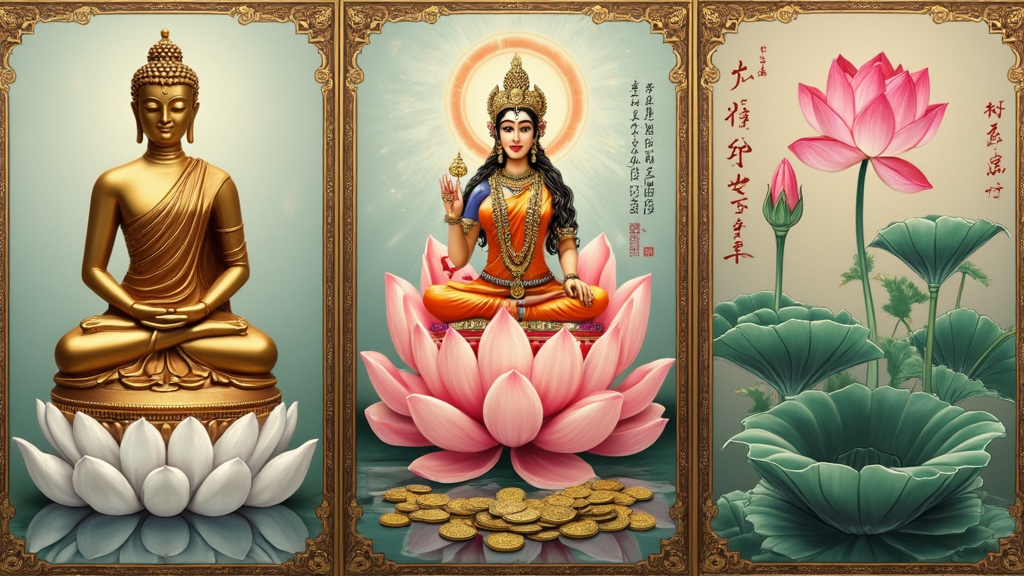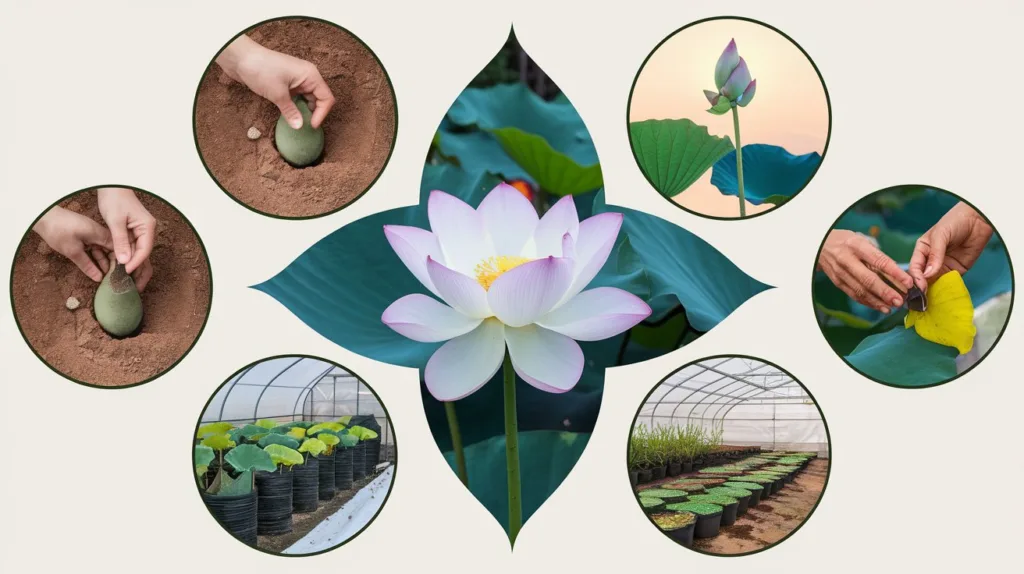Introduction
The lotus flower, scientifically known as Nelumbo nucifera and Nelumbo lutea, has captivated human imagination for millennia. This aquatic perennial, emerging from murky waters to bloom in pristine beauty, has become a powerful symbol of purity, rebirth, and spiritual enlightenment across various cultures. In this comprehensive exploration, we’ll delve into the profound symbolism of the lotus flower, its cultural significance, and its impact on daily life, wellness, and contemporary practices.
Key Takeaway:
The lotus flower’s journey from mud to blossom mirrors the human spirit’s potential for growth and transcendence, making it a timeless symbol of purity and spiritual awakening in many traditions.
The Lotus in Cultural and Spiritual Contexts


Buddhist Symbolism
In Buddhism, the lotus holds a central place as a symbol of purity and spiritual enlightenment. The flower’s ability to emerge unsoiled from muddy waters represents the potential for spiritual awakening amidst the challenges of daily life.
| Lotus Color | Buddhist Symbolism |
|---|---|
| White Lotus | Purity of mind and spirit |
| Pink Lotus | The supreme lotus, often associated with the Buddha |
| Blue Lotus | Wisdom and knowledge |
| Red Lotus | Compassion and love |
Hinduism and the Lotus
In Hinduism, the lotus is associated with several deities and concepts:
- Creation: The god Brahma is often depicted seated on a lotus
- Prosperity: The goddess Lakshmi is frequently shown standing on a lotus
- Purity: The flower symbolizes spiritual purity and detachment from material things
Chinese Culture and Symbolism
The lotus holds significant meaning in Chinese culture:
- Harmony: Represents peace and harmony in one’s life
- Purity of Heart: Symbolizes noble character and moral values
- Fertility and Abundance: Often used in Lunar New Year celebrations
- Marital Bliss: Commonly featured in wedding decorations
The Lotus Flower in Daily Life and Wellness


Traditional Chinese Medicine
The lotus has been used in traditional Chinese medicine for centuries. Various parts of the plant are believed to offer health benefits:
- Lotus seeds: Used to improve digestion and boost energy
- Lotus leaves: Believed to aid in weight loss and improve circulation
- Lotus root: Consumed to enhance lung health and reduce inflammation
Meditation and Wellness Spaces
The symbolism of the lotus is often incorporated into meditation practices and wellness environments:
- Yoga: The lotus position (padmasana) is a fundamental seated posture
- Meditation Gardens: Lotus ponds are common features in meditation spaces
- Spa Decor: Lotus motifs are frequently used in wellness centers to create a serene atmosphere
Growing and Caring for Lotus Flowers


For those inspired to bring the purity and beauty of the lotus into their own spaces, here are some tips for growing these magnificent flowers:
- Sunlight Requirements: Lotus plants need at least 6 hours of direct sunlight daily
- Soil Quality: Use heavy, clay-like soil in containers without drainage holes
- Depth Placement: Plant tubers in 6-8 inches of water
- Pruning: Remove yellow leaves and spent blooms regularly
- Winter Care: In colder climates, bring containers indoors or ensure ponds don’t freeze solid
The Lotus in Art and Design


Contemporary Art
Modern artists continue to draw inspiration from the lotus, creating works that explore themes of:
- Transcendence
- Spiritual awakening
- The cyclical nature of life
Fashion and Homeware
The lotus motif is popular in various design fields:
- Fashion: Lotus-inspired prints and jewelry designs
- Home Decor: Lotus-shaped candle holders, wall art, and tableware
- Architecture: Lotus-inspired buildings, such as the Lotus Temple in New Delhi
The Symbolic Significance of the Lotus
The lotus flower’s journey from mud to blossom serves as a powerful metaphor for the human experience:
- Overcoming Adversity: Just as the lotus rises through murky waters, we can rise above life’s challenges
- Inner Purity: The unblemished petals remind us of our innate purity, regardless of external circumstances
- Spiritual Growth: The blooming lotus represents the unfolding of spiritual awareness
- Detachment: Floating above the water, the lotus symbolizes detachment from material concerns
- Rebirth and Renewal: The daily opening and closing of lotus blossoms mirror the cycles of rebirth and renewal in life
Incorporating Lotus Symbolism in Modern Life


In our fast-paced, often chaotic world, the symbolism of the lotus can offer guidance and inspiration:
- Mindfulness Practice: Use the image of a lotus to center your thoughts during meditation
- Personal Growth: Reflect on the lotus’s journey as a metaphor for your own personal development
- Home Decor: Incorporate lotus designs in your living space to create a serene environment
- Gift-Giving: Choose lotus-themed gifts to convey wishes for purity and spiritual growth
- Self-Reflection: Use the lotus as a reminder to maintain your inner purity amidst life’s challenges
Conclusion
The lotus flower’s symbolism of purity, rebirth, and spiritual enlightenment transcends cultural boundaries and continues to resonate in our modern world. From its roots in ancient spiritual practices to its presence in contemporary art and wellness spaces, the lotus remains a powerful emblem of the human spirit’s capacity for growth and transcendence.
By understanding and embracing the rich symbolism of the lotus, we can find inspiration for our own journeys of personal and spiritual development. Whether we’re seeking to create peaceful environments, explore spiritual practices, or simply find moments of beauty in our daily lives, the lotus flower offers a timeless reminder of the purity and potential that lies within each of us.
As we navigate the complexities of modern life, may we, like the lotus, rise above the murkiness to reveal our true, radiant nature, blooming with grace and resilience in the face of life’s challenges.






